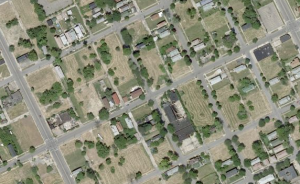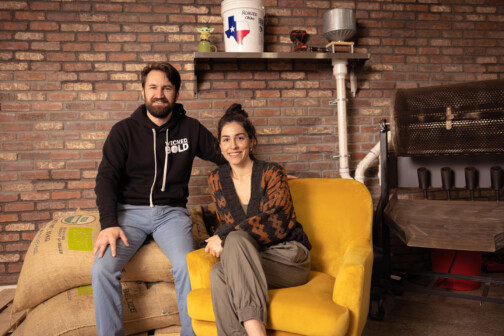
Building a city of only leaves is fun for a while….
Christopher Alexander, one of the foremost influential writers/thinkers on urban structure, complexity, and the juncture between philosophy, psychology, and the ecology of human habitat, famously wrote an essay that “a city is not a tree.” In it, he argued against the on-going modernist planning and city building that was too “top down” and not an outgrowth of “the many.”

While I concur with his thesis, I will disagree with the appropriate usage of the metaphor. Or at least adapt the metaphor to the rhetorical purposes of this blog posting. He used the tree, to reference the trunk, the singular and top-down planning initiatives of the 20th century (that incidentally had no historical foundation, but were quite literally experiments with humans as the lab rats) and the thought process that a beautiful tree with leaves will sprout from said trunk.
The reality is that a city is precisely like a tree, when we properly define what the trunk, the roots, the limbs, and the leaves represent. So in this sense, the planning and city building process and professions are NOT like a tree as Alexanders suggests. But, the actual city is like a tree when we properly associate the metaphorical assemblage and the role of planning and citizens in the cultivation of said tree.
First, the primary mistake of the current generation of city planning/building, which for the most part is a remnant of the top-down approach that Alexander criticizes, and that Ed Glaeser summarizes in the first part of his most recent book (skip the last half), is that we mistake “city” and city function for that which we see, touch, hear, smell, etc. All of those things are the physical by-product of what the city really is and the function it performs for humanity.
What we’re left with is those who don’t know better concocting things like homogenous “arts districts” (let’s remember that the entire idea of “district” is a modernist one implying homogeny and impending doom), convention centers, highways, or various other “magic bullet” type projects to SAVE THE CITY!!!!!
Then on the other hand, we have those that SHOULD know better, professionals in the planning and city building industry who confuse things slightly closer to the mark, but still off it of being the appropriate and foundational building block of urbanism. These include the various phraseology clattered about by planners such as “mixed-use,” “live-above-the-shop,” “Build-to-lines,” “form-based-codes,” etc. etc. Similar to the above, these are just by-products. They are the leaves of the tree, but not the tree. They are ephemeral. They come and they go.
They are the by-product of that which is deeper and commonly misunderstood. It is also precisely the reason why we end up with so many faux or cargo cult urbanism development projects. With respect to Tyler Durden, planners, architects, and developers shoving feathers up their butts and calling themselves chickens, while the city officials crow about what they’re bringing to a city only to have it die on the vine not a handful of years later.
They’re all in the wrong place. They misplace their faith in perhaps they’re own deluded abilities to create value where there is none. Or at least, not nearly as much as they think they can get. More power to them if they can make a profit. But the lessons of Victory and Park Lane Place should prove other wise, providing a clarion call to both the public and private sides, that we must get it right. Development ought to be predictable, not chaotic. “Location, location, location” lasted so long because it was correct. There is a direct relationship between value, density, and interconnectivity, i.e. the location of a place in relationship to its surroundings.
The city, like a tree, is indeed a fractal entity. Where the tree is comprised of cells serving various functions, both interdependent and occasionally competitive, likewise is a city. Fractals are complex arrangements determined by infinite processes defined generally by simple rules. Water finds its lowest point, flows downhill, produces array of water bodies.
Or think about your television. Each pixel is just a blinking light. If you saw only that one pixel and watched it for an hour, you would only see lights of various colors blinking on and off. Watch the entire screen and the same hour of let’s say an episode of The Wire and you get nigh infinite meaning and complexity from that one pixel.
The rule of the fractal agglomeration of the city and its patterns of agglomeration is based upon desirability (and ideally on free choice and opportunity – although there rarely is such a reality). And desirability is related directly to proximity. To some extent the web allows us to decentralize, but being that we are social creatures who interact and perform tasks better when in person much like we don’t hate but depend on other pedestrians where eye contact is made, but hate all other drivers where it isn’t possible, suggesting that we will utilize the web rationally specifically to cluster, not in spite of it. Clustering still has its advantages.
It is also important to note, that desirability is mostly subjective. This is where Maslow’s hierarchy of needs comes into place. Certain needs are objective. We all need access to air, water, shelter, and other basic necessities for life. The livable cities rankings are based upon this understanding (if only intuitively). Those that provide the greatest range of opportunity for the greatest range of people are those most livable cities (Vancouver, Zurich, Copenhagen, etc).
As you get higher up the order of needs, less people share those needs. Therefore, desirability is a gradient of subjectivity. Of occasionally overlapping and sometimes competing wants and needs. The city’s job is to balance those competing demands ensuring the basics (at least) are still met.
Our shared humanity, or nature as humans, is why cities are so similar throughout their recorded history and across the globe. Just bigger now. The differences might seem overt, but only as deep as one tree’s leaves are of a different shape or color than another’s. We all have the same (or similar) needs. Some just have regional variegations based on adapted localized culture and often more importantly, geography, ie different material palettes and adaptations based on local climate.
Unfortunately, we’re still building cities of leaves. Of those things we touch and see. Enforcing “mixed-use,” “live above the shop,” “build-to-lines,” and form-based codes and other codifications in places that likely don’t warrant such intensity of development. None of these concepts were defined when any great city was born and evolved. They just happened out of rationality and competitive metabolism of ideas. All are direct outgrowths of the desirability of proximity and the proximity to that which some segment of the market (enough to fill the building at profitable rent/maintenance levels) finds desirable, thus supporting the development.
It should be stated that I do support those quoted concepts, but only in appropriate places, and with the caveat that they are merely a necessitated band-aid on a gaping wound of city planning and perhaps more importantly, understanding.
Eventually, those leaves all dry up and blow away when they have no foundation to regenerate. No trunk, no seed, no roots, and more importantly, no stewards to cultivate it. Because ultimately that is what citizens and planners really are. The seed and roots are the connectivity (local and global). It is the point of being, the city’s raison d’etre. The trunk and branches are the infrastructure, the bones. They ought be permanent if you prefer a city to last. See Detroit, barely with any leaves left on its branches.

It had not only a homogeny of industry, but more importantly I’m guessing was a homogeny of transportation. Otherwise, it might’ve better adapted and overcome. If we don’t learn (and quickly) that the leaves are not the tree, our leaf pile will dry up and blow away and we’ll have no soft landing spot to cushion the various jumps in and out of bubble cycles.






